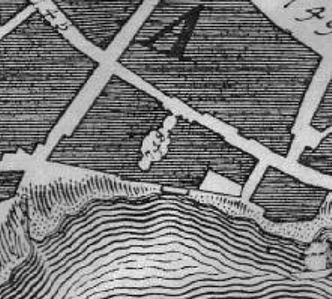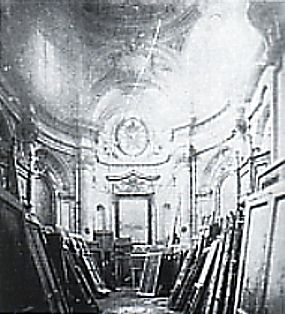The church of Santo Stefano de Arenula is documented for the first time in a bull promulgated in 1186 by
pope Urban III (1185-1187). The bull mentions the church as one of the branches of San Lorenzo in Damaso, and it is registered as
Santo Stefano "de Cacabariis", which may allude to the fact that it was situated in the region of the "Cacabari", who were
manufacturers and vendors of "cacabi" or "caldaie", a sort of washing cauldrons. The "Cacabari" lived and plied their trade in
this area, which corresponds to today's south part of Via Arenula close to Ponte Garibaldi.
In a document dating from the end of the 14th century we may deduce, that the church is served by
Benedictine monks. In the 16th century the catalogues of the churches of Rome record the church with different by-names. "Sancti
Stephani in Silice" has to do with the fact that the church was located at a street paved with pebble-stones, while "S. Stephani
alli Vaccinari" alludes to the "Vaccinari", tanners who prepared hides, since the church in 1570 had been entrusted by pope
St. Pius V (1566-1572) to the Confraternity of tanners, which previously had resided at the church of San Paolo alla Regola.
The confraternity raised the necessary funds to rebuild the church and rededicated it to their patron saint, the apostle St.
Bartholomew, who was skinned alive. The task of the tanners was apparently also to butcher and flay cattle at the slaughter-house.
 |
| The church of Santo Stefano
de Arenula on Nolli's map of Rome from 1748. Note the elliptical nave and the profound apse. |
In 1723 the church was reconstructed from the ground at the expense of the confraternity, which had it
restored again in 1827. The single nave interior was adorned with frescoes executed by Niccolò Circignani, called "Il Pomarancio"
(1517-1596). The altars of the church were embellished with works by Jacopo Zoboli (1681-1767), Giovanni De Vecchi (1536-1614)
and by a certain Ragusa. In 1885, in line with the urbanistical systematization of the area, the church of Santo Stefano de Arenula
was demolished. The following year the main altar with its marbles and gilt bronzes was transferred to Assab in Eritrea and set up
in a church erected by the Italians, who then resided there.
|

